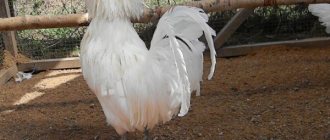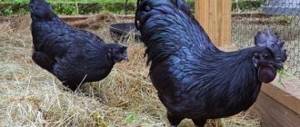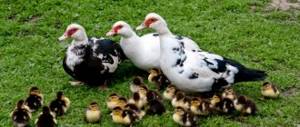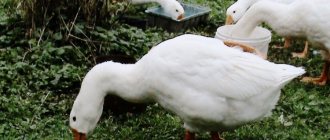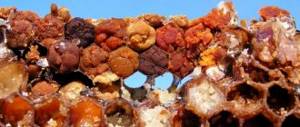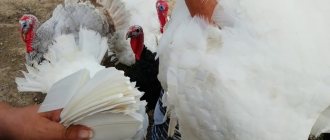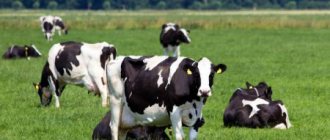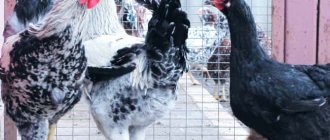Origin
Ayam Chemani means black chicken in Indonesian and Javanese. It is a descendant of Ayam Bekisar chickens, obtained by crossing Green Jungle breed roosters with Bankivsky jungle/domestic chickens. The progenitors are black birds of the Ayam Kedu species, which were bred in the villages of Kedu, Beji and Kahuripan in the Kedu district of Temangung district of the Indonesian province of Central Java.
The breed is represented by 3 species: Chemani (black), white Kedu, Kedu Blirik (in other sources - Lurik).
The breed was first mentioned by colonial settlers from Holland. It appeared in Europe in 1998. Today they are bred in the Netherlands, Germany, Slovakia, Ukraine, Belarus and the Czech Republic.
THE APPEARANCE OF AYAM TSEMANI IN EUROPE
This breed appeared in Europe relatively recently thanks to the Dutch bird specialist Jan Steverink, who in 1998-2000. He visited Indonesia several times, from where he brought eggs to Holland. Of the first 20 eggs incubated in 1998, only one chicken hatched. A year later, only one cockerel hatched from the second brood (in January). From the third - in September 1999 - 2 hens and 2 cockerels were born. This is all.
Jan Steverink became very interested in these more or less real ayam tsemani and decided to show them in Holland as show birds. Even a draft standard for this breed was developed, but it was not complete enough, since it was based on very meager information brought from Indonesia and contained in the book of France Sudro.
According to J. Steverink, at present in Europe it would be necessary to breed ayam tsemani in a form closer to the real ones. This is an Asian breed, which means it should stand out with long legs and a muscular build. In addition to these criteria, there is one more, the most important one - black coloring of all visible parts of the body. Selection should always be carried out with the aim of achieving ideal melanism in this breed of chicken. To eliminate undesirable traits, he advised crossing Ayam Tsemani with the closest breed, that is, Sumatra or Ardennes chickens, avoiding inbreeding if possible. Using Steverink's advice, several poultry farmers in Germany, Holland and Belgium have made such combinations. But did they bring the expected results? I will try to at least partially explain this on the basis of ayam cemani grown in Poland.
Description of the breed
The peculiarity of the breed is the presence of a dominant gene that causes hyperpigmentation. This explains the black coloration of meat, bones, internal organs, comb and beard, eyeballs, beak, tongue, skin, claws, and paws. The blood is darker in color than that of other species. The feathers are also black with a green tint. Other characteristics of the breed:
- small head;
- a small body resembling a trapezoid in shape;
- medium sized eyes;
- the comb stands straight, has teeth, and is shaped like a leaf;
- the beak is shortened, there is a thickening at the end;
- round or oval earrings;
- neck length is average;
- legs are long, have 4 toes;
- the chest protrudes slightly forward;
- the wings fit tightly to the body or are slightly raised;
- The tail of males has very elongated braids; in females it is smaller in size.
Breeding goals:
- meat and egg production;
- use in religious ceremonies. For example, to get rid of a streak of bad luck, a bird is sacrificed, and in Thailand they believe that a black chicken has mystical powers;
- use in folk medicine, in particular for the treatment of diseases of the circulatory and respiratory organs;
- participation in cockfights, since the breed is classified as fighting.
PIGMENTS AND COLOR
The pigments that give color to the skin and feathers of chickens belong to two groups - melanins and carotenoids. Melanins determine yellowish-brown (pheumelanin) and brown-black (eumelanin) coloration. Melanin production occurs in special skin cells - melanocytes. In them, melanin accumulates in the form of rod-shaped granules ranging in size from 0.5 to 1.3 microns. Carotenoids are fat-soluble pigments that determine the yellow (as in yolk) and orange-red color. This group includes xanthophyll, the grains of which are found both in the living epidermis and in the keratinized surface layer of the skin.
The color of the plumage depends not only on the pigments, but also on the microstructure of the feather, which creates a particular optical effect due to the refraction of light.
The ayam tsemani has everything black: feathers, beak, metatarsals, skin all over the body, crest and earrings. Muscles, tendons and walls of blood vessels (not blood) are black in color; soft and hard membranes of the brain; there are also small black spots in the lungs. The bronchi and air sacs are pigmented. The gonads contain a lot of melanin, but the liver and heart are not pigmented. This type of pigmentation is called mesodermal, in contrast to dermal, i.e. cutaneous
Productivity
It is grown mainly for decorative purposes. It has a low level of egg production, but due to its black meat it is considered an exquisite delicacy.
Characteristic:
- The weight of a rooster is from 2 to 3.5 kg, and that of a chicken is from 1.6 to 2 kg.
- Puberty occurs at 6-8 months.
- Annual egg production is up to 150 eggs.
- The eggshell color is cream with some pink tint.
- The weight of 1 egg is from 45 to 60 g.
- They grow slowly, which affects the concentration of chemicals in poultry meat that improve aroma and taste.
- Chicken meat is high in protein and minimal in fat.
- The bird has no tendency to become obese.
- Sexual activity of a rooster is 10 months.
Chinese chickens: white outside - black inside
Every year, Russians (especially residents of Siberia and the Far East) are becoming more and more familiar with poultry from China. Representatives of the “Black Bone” (wū gǔ jī) lineage are of particular interest. The group includes more than a dozen breeds. The skin, meat and bones of such birds range in color from dark blue to soot. A characteristic feature of many of them is eggs with green and pink shells.
Chinese silky (Bamboo chicken)
The breed has been known to Europeans since the 13th century according to the descriptions of the traveler Marco Polo, who visited China. It is distinguished by the presence of a fifth toe on its paw, unusual plumage and skin coloring. The feathers of these birds resemble cat fur. The color of the down can be not only black, but also orange, blue, etc. Caring for the bird is simple; protection from moisture is necessary. The weight of the cockerel is 1.5 kg, the hen is 1 kg. Egg production – up to 100 eggs.
Exotic birds have a very flexible character, trusting and peaceful
Representatives of “wuheiliu” (wū gǔ jī): Yanjin, Xuefeng, Xichuan and others
The “uheyiliuy” line is not new. The Chinese claim that it is hundreds of years old.
Regardless of the color of the plumage, all birds in this group are distinguished by such characteristics as very dark color of meat, skin, bones
In China, such birds are very popular. They are bred on an industrial scale and in homesteads.
Lean dark meat of Chinese chickens is rich in amino acids, traditionally used not only in cooking, but also in oriental folk medicine.
Breeding Features
When purchasing an adult bird, you need to pay special attention to its transportation to reduce stress. In the case of eggs, there is a similar requirement, since time and violation of transportation rules impair hatchability.
Subtleties of mating
In order to obtain purebred chicks, the birds are kept in isolation. The ratio of 1 rooster to 5 hens is considered optimal for this breed. When favorable conditions are created, the percentage of egg fertilization is high (90-95%).
Males and females are taken from different farms. When purchasing 2 roosters, the manufacturer changes for the next year.
Incubation period
Is 21 days. The temperature in the incubator should be maintained at 37.8 degrees; if the value increases, the chicks hatch earlier, which is undesirable. If the device does not have an automatic function for turning eggs, this is done manually every 2 hours. 2 days before the chicks hatch, the procedure is stopped and the temperature is lowered to 37.5 degrees. After hatching, the chicks are transferred to a warm box.
httpv://www.youtube.com/watch?v=wgAlsvG—cA
Care of offspring
The chicks have a black color, short fluff and a squeaky voice. Due to strong immunity, the survival rate among them reaches 95-100%. To prevent chickens from getting sick, certain conditions should be created:
- The first 2 weeks in the box the temperature should be 28-30 degrees. Then gradually lower it to room temperature.
- When the chicks have grown up, they are moved to an aviary where drafts are excluded. Chicks under 2 months of age should not be placed with adults to avoid aggression from the latter.
- Feed – starter compound feed with chopped eggs. In the first 7 days, the diet includes cottage cheese with a fat content of up to 15%, greens, and crushed corn grits.
- Vitamins are given from the first days of life by dripping them into the beak.
- After reaching one month of age, the young animals are transferred to balanced feed with a high protein content. The diet includes herbal flour, root vegetables, and mineral mixtures. It is advisable to add maggots.
- First, the chicks are given boiled water in their automatic drinkers; it can be replaced with weakly brewed tea. After a few days, transfer to regular water.
Planned herd replacement
If bred for decorative purposes, replacement of the herd is not critical for a long time. Otherwise, the breeding stock must be replaced every year. To do this, chickens are selected for breeding and a new flock is created. Individuals that are not suitable for breeding are sold/slaughtered.
Black chickens are a rare breed, so it will not be possible to carry out a planned replacement of the flock; its degeneration is inevitable. To lengthen this, old hens are kept, and young ones are carefully selected. To avoid family ties, out of 10 chicks, no more than 1 chicken is left.
Content
Birds are highly timid, so you should approach the aviary and enter the chicken coop calmly and quietly, in order to avoid panic. Frightened chickens may injure themselves or injure others when attempting to leave the barn.
Conditions of detention
Black chicken is a heat-loving bird, so the temperature in the chicken coop should not fall below 15 degrees. Lower values lead to a decrease in egg production or its complete cessation. With a slight minus, it is forbidden to let the chicken out of the coop due to the high risk of frostbite on the legs, combs and beard. Drafts are also a danger.
They have an aggressive temperament, as they belong to the fighting type of the breed. They do not get along well with other animals and birds, so they are kept separately. Young and adult birds are also kept in separate enclosures. A dividing net does not always eliminate the possibility of cockfighting. To prevent fights, use bird glasses or a beak ring.
Due to the well-developed wings and legs, they fly and jump high. Therefore, enclosures should have high fences and a protective net on top. It is advisable to make perches and nests multi-tiered.
Due to the bird’s high timidity, it is recommended to place bushes, makeshift shelters and thickets of grass in the aviary.
What should a chicken coop be like?
Any building, even a barn, can be used as a poultry house. If there is nothing like that, then you can build it from stone or timber, with the optimal height being 2.5 meters.
It is better to choose a place where there is a lot of sun. This breed loves warmth, but does not tolerate heat well. Therefore, in the southern regions, the poultry house is located so that during the summer season it is under the shade.
When building, it is important to make the roof so that it does not collapse under the snow in winter. Can be covered with polycarbonate.
Basic requirements for a chicken coop:
- Chickens should be kept in separate sections, separated from each other by a chain-link mesh through which air circulates.
- The poultry house is built on a dry area that is not touched by flood and groundwater. If this is not possible, then the soil must be drained and then a foundation must be created.
- The floor and walls must be properly insulated using mineral wool or polystyrene foam. The cracks should be sealed, and additional heat-insulating material with a thickness of at least 15 cm should be laid on the floor. Alternatively, straw or peat. For the winter, heaters are installed in the barn or heating is provided.
- Perches are installed at a height of at least one and a half meters from the floor. They are made from round timber with a diameter of 5 cm. The optimal materials are dried and peeled oak or aspen.
- In warm regions, double doors are installed in chicken coops - solid and made of mesh. The former close in winter, while the latter promote good ventilation in summer.
- In the family room there is room for 1 male and 19 females.
- Windows should be installed on the south side to increase daylight, and doors should be installed on the west or east side so that winds from the north do not blow into them.
- In the northern regions, forced ventilation must be installed in chicken coops in order to turn it off during severe cold weather.
- Boxes with dimensions of 50x30x20 cm are suitable for nesting, with hay or straw spread on the bottom.
- Drinkers should be nipple-type, and feeders should be hopper or grooved so that birds do not scatter food.
- Near the chicken coop it is necessary to equip a pen with a height of at least 2 meters, since Ayam Tsemani fly well. It is advisable to install drinking bowls and feeders there, as well as baths and a canopy so that the chickens can hide from the weather.
Is it possible to build it yourself?
Black hens spend their time mainly in the poultry house, so it is important to equip it not only for a comfortable life for the birds, but also to make it easy to maintain. It is better to count 2 individuals per 1 square meter.
Construction of a chicken coop:
- The foundation is best made of a columnar type. For small sheds, it is enough to dig metal tables around the perimeter so that predators cannot dig under.
- It is recommended to make double floors. A subfloor is laid over the foundation, and sawdust is sprinkled between the sheathing. Next comes the insulation, and then the main floor is nailed down from smooth, stripped boards.
- The walls are built with a height of 2-2.5 meters, usually a wooden beam nailed down is chosen for them. Next, it is covered with thermal insulation materials and covered with boards. Then they paint it - this is necessary to protect it from insects.
- The roof is often made with a gable roof, with an attic where food supplies and various equipment are stored. First, the flooring is laid, then the heat insulator, roofing felt and roofing on top of this.
- The aviary should have an area at least 2 times larger than the chicken coop. The floor is left dirt so that birds look for insects.
- On the perch, about 30 cm is allocated for each chicken. They cannot be placed one above the other, and special trays are placed under the perches to make cleaning easier.
- A 40-watt light bulb is enough to illuminate 20 squares. It is better to avoid bright light so as not to provoke bird aggression.
Feeding
Ayam Tsemani are not particularly fastidious in their diet, but they still have several features:
- The feed is based on grains or mixed feed with cereals. It is important to understand that the better the food for the bird, the higher the egg production.
- To make poultry meat tastier and juicier, meat waste is added to the feed.
- Wet mash with meat or fish broth and vitamin and mineral complexes are suitable for nutrition.
- Fish oil has a positive effect on the well-being of chickens.
- In cold weather, when there is little greenery, you can add hay, bran or vegetables to the feed.
Diseases and their treatment
Tsemani chickens are not very sickly, and most often suffer from parasites. Occasionally they can carry non-contagious diseases that cause inflammation of the ovaries or oviducts. Usually the causes of illness are:
- lack of vitamins;
- lack of cleanliness in the poultry house;
- poor quality food.
As a preventive measure you need:
- Install special drinking bowls that do not allow dirt to get into the water.
- Regularly clean and disinfect the birds’ home and equipment, and prevent the development of dampness.
- Give the birds enough free space.
- Provide plenty of good food.
Eimeriosis
In rare cases, chickens become infected with this disease, which is caused by the protozoan Eimeria. Chicks may become ill immediately after birth, but a diagnosis can only be made after a couple of weeks.
Main symptoms:
- lack of appetite;
- constant desire to drink;
- weight loss;
- loose and frequent stools that are white-green and then dark brown;
- disheveledness.
Treated with coccidiostats and probiotics.
Marek's disease
The incubation period of this disease is from 2 to 15 weeks. If the eyes are affected, the bird goes blind. Moreover, with age, the likelihood of becoming infected only becomes higher.
Signs of infection:
- restless behavior;
- unsteady gait;
- conjunctivitis;
- paralysis of limbs;
- tumors of internal organs.
There is no cure for this disease, so day-old chicks must be vaccinated. The injection is given again at the age of 10 days, and the third - after 3 weeks.
conclusions
- The Ayam Tsemani breed is not considered productive. Tsemani do not have a very high egg production, but they have very tasty and tender meat of an unusual black color.
- According to experts, purebred Tsemani chickens are practically impossible to find. Most often, half-breeds are sold under their guise.
- They do not require special food; they eat any food, but at the same time they require special conditions of detention.
- Black roosters are a breed that does not communicate well.
- Despite the almost complete absence of the brooding instinct, females take very good care of their offspring.
- They are in good health.
The secret of the unusual coloring of eggs
You can sometimes see black chicken eggs in photographs, but it makes no sense to look for which chickens are laying them. A profitable business selling unusual kuro tamago eggs was invented by the Japanese (Owakudani).
The shells are dyed in sulfur thermal springs - it is sulfur and iron sulfide that give the shells a “mystical” hue. The springs are located in the crater of an extinct volcano located in Kanagawa Prefecture.
According to legend, kuro tamago can extend a person’s life by 7 years - to do this, you need to eat them while contemplating Fuji.
